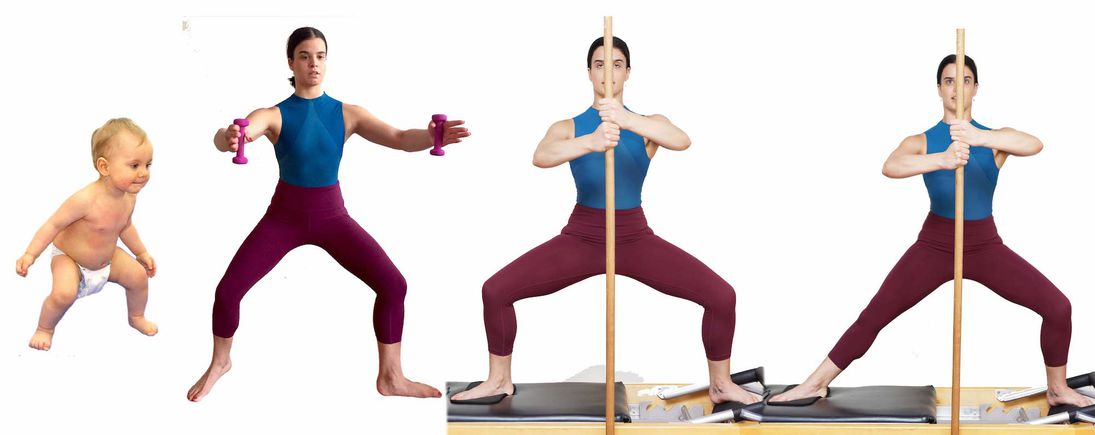DNS Exercise 3 (Pilates)

DNS EXERCISE 3 (PILATES) REGISTER HERE
512 New South Head Rd, Double Bay, NSW
April 26-28 2024
Friday 26 April - 10am - 6pm
Saturday 27th April - 9am - 6pm.
Sunday 28th April - 9am - 5pm
COURSE 3 OBJECTIVES
Course 3 focuses on using DNS concepts in Pilates to address common injuries, pathologies and postural dysfunctions.
We discuss the impact of long-term muscle imbalance and faulty movement patterns and learn how to approach common imbalances, dysfunctions, and degenerative conditions of the upper extremity, lower extremity, and spine.
-
Review the physiological framework of DNS principles
-
Detailed definition of optimal postural stabilization, stepping forward (reaching, grasping, kicking) and supporting (taking off) function
-
Practice and instruct Sagittal Stabilization (SS) and differentiated movement patterns in DNS and Pilates progressions with specific attention to: respiration, relaxation in muscle activation and the importance of isolated movement in all joints
-
Discuss the impact of long term muscle imbalance and faulty movement
-
Description of common imbalances, dysfunctions and degenerative conditions of the upper extremity, lower extremity and spine.
-
Detailed analysis of spine and pelvic dysfunctions, including nonspecific lower back pain, pelvic floor dysfunction, pelvic pain.
-
Detailed analysis of upper extremity dysfunctions, including rotator cuff, impingements, tendinitis, epicondylitis.
-
Define neutral position of scapula on chest, physiological scapulohumeral rhythm and how these influence the dynamic function of the gleno-humeral joint, cervical spine and thoracic spine
-
Detailed analysis of lower extremity dysfunctions including groin pain, FAI, ACL injury, meniscus lesions, jumper's knee, foot disorders.
-
Define neutral position of the hip joint and the importance of maintaining isolated movement of the hip to lumbar and thoracic spine and the alignment of diaphragm and pelvic floor
-
Analysis and practice of how DNS and Pilates exercise systems can be utilised to correct muscle imbalances and movement dysfunctions with emphasis on correct direction of muscle pull
-
Integration of DNS corrective exercise principles within Pilates exercise cues (verbal and tactile) and within Pilates programming, with attention to musculoskeletal dysfunctions and injuries.